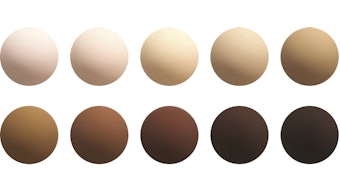The term surfactant is a shortened version of the expression surface active agent, and specifically is used to define a molecule that lowers the surface tension of an aqueous solution. These molecules typically are bipolar in nature, consisting of a hydrophilic (water soluble) segment and a hydrophobic (water insoluble) segment.
The hydrophobicity of linear or branched alkanes derived from fatty acids and fatty alcohols has long been used as a basis for the manufacture of hydrocarbon based surfactants, and are often referred to as ”fatty surfactants.” It was recognized that a fluorinated alkane was even more hydrophobic than an alkane itself, and just over sixty years ago, the first fluorinated surfactant, or fluorosurfactant, was introduced commercially.
As a consequence of the increased hydrophobicity, fluorosurfactants provide much greater surface tension reduction. Also, since fluorinated alkanes are oleophobic (hydrocarbon insoluble) as well as hydrophobic, fluorosurfactants can be used to reduce the surface tension of organic solvents as well as aqueous systems. So, in aqueous systems where either can be used, how do they compare?
Fluorosurfactants are more surface active (surface tensions of 15-25 dynes/cm are typical at concentrations of 0.005-0.01% by weight), enabling them to reach extremes of surfactant behavior not attainable with fatty surfactants (wetting, foaming, dispersing, leveling). Their oleophobic nature, however, makes them a poor choice for emulsifying grease or providing detergency. Many cleaning applications in fact actually use both together in order to get the best wetting and penetration as well as emulsification and detergency.
For more information, consult "Textiles Finishes & Fluorosurfactants," in Organofluorine Chemistry: Principles and Commercial Applications, RE Banks, BE Smart and JC Tatlow, eds, Plenum Press, NY (1994).










